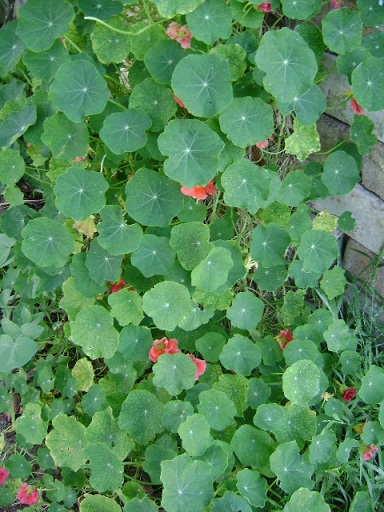What we’re going to do right here is go back, way back, back into time…
Today we are leaving behind those heady patchouli scented days of the ’70’s to take a step back to some really retro food and talk about my experience as a food forager! Food foraging has been around for as long as people have been around and basically involves making lots of deliciousness out of stuff that is growing wild around you…well, that’s my definition…if you want to get more technical, try google! When most people think about foraging, they probably imagine it being done in the country however urban foraging is becoming increasingly popular.
Part of my birthday resolutions this year was to do something new each month – which is why a few Sundays ago, I found myself sipping a Cleavers smoothie with a group of strangers. I was taking part in an Edible Weeds Walk run by Very Edible Gardens (www.VeryEdibleGardens.com). The smoothie was really good and set the tone for what was a very pleasant and informative few hours. During that time we were taught to identify a number of so-called weeds and learned how these could be used both as medicine and as food.
The setting was amazing, an urban farm, virtually under the domes of the Russian Orthodox Church in Brunswick. And a glorious day to boot….one of the first real signs that Spring was on its way.
It was also just a short stroll away from the CERES environmental park and the Merri Creek Bike Track.
Mind, you, the setting did have some drawbacks, on my way back to my car, I was quite happily strolling along, enjoying the lovely view, the sunshine and my solitude, when I came across this sign, and suddenly the fact that I was alone in this large parkland became a little bit frightening!
However, I made it home safely and was able to use my new-found knowledge to make this lovely floral foraged salad! For my salad I used:
Angled Onion – stalks and flowers:
There are literally thousands of these plants growing by our local creek and whilst I had previously noticed the strong smell of onions around them, I had no idea they were edible. They have an onion flavour, much like chives.
Wild Brassica – leaves and flowers:
This too is prolific in my local area. The leaves taste like supercharged cabbage It can give you that nose tickle you get when you eat mustard. The flowers are much milder and added some colour to the salad.
Nasturtium – leaves and flowers
These were growing in my garden but the flowers are pretty and added some colour. The leaves have a peppery flavour. Since then, I have seen nasturtiums growing in the wild so this wasn’t too cheaty!
Dandelion leaves.
These are quite bitter. Adam, our guide on the walk, said that even if you do not like these the first time you have them, to persevere with them as the taste really does grow on you. Also, the bitterness is very cleansing. I didn’t mind them in my salad but I was light handed, not only due to Adam’s caution but also because the park I was foraging in had just been mown and the leaves were not that easy to come by! 
Along with these foraged ingredients, to make my salad, I added some lettuce and some avocado, some thinly sliced radish and a few cherry tomatoes. I also made a very simple lemon and oil dressing as I really wanted to be able to taste the different leaves and flowers. Here are the ingredients:
This was a very tasty salad which, I will definitely be making again. I think I was right to err on the side of caution with the dandelion leaves. I chopped these up quite finely so whilst there was a slight underlying bitterness in some bites it was certainly not unpleasant and added a depth to the salad. How pretty and fresh does this look? I also took advantage of one of first really warm days and ate this outside….Voila!
The foraging itself was great fun, I really enjoyed walking through the park and identifying and choosing the weeds for my salad. There is also something incredibly gratifying about picking and eating your own produce, whether you have grown it or foraged it. In fact, foraging is a little bit more fun because it feels like you’re doing something a little bit naughty!
But really, cooking with things I have grown (or foraged) makes me feel connected to the earth and the environment in a way that shop brought produce can never do. Who knew I was such a hippy? And now for my inner risk manager – if this post inspires you to commence your own adventures in foraging, I would really suggest doing a group exercise like I did – not all plants are good for you and many can actually cause you harm. Having advice from a knowledgeable person like Adam could be the difference between a totally fun and enriching experience and one that leaves you very ill indeed!
Sorry Oscar, none left for you!
Adam, who lead our walk, has also written a fab book:
This can be purchased at the following
http://www.eatthatweed.com/edible-weeds-book/
There are a number of other books and other resources on foraging you could use as well. Here is a link to an article from Gourmet Traveller but most libraries and book shops will have something on the topic plus there is an abundance of info on the internet.
http://gourmettraveller.com.au/how-to-forage.html
I will be experimenting with more foraged finds over the next few months. I would like to try a cooked option next. I don’t think the ngled onions will be in season much longer so before they disappear I’m thinking a stir fry with some of the wild brassica, some chilli, ginger and garlic may be in order. This would be delicious as a side dish or tossed through some noodles as a lovely vegetarian main meal.
In the meantime if you make something lovely out of foraged foods, please let me know and….enjoy!




















